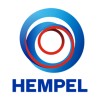A Product Owner in procurement oversees the development, implementation, and continuous improvement of procurement-related products, tools, and systems that support an organization's purchasing processes. This role focuses on aligning the product vision with business needs, ensuring that procurement tools enhance efficiency, cost savings, compliance, and strategic sourcing capabilities, Procurement processing
Key Responsibilities
- Product Vision and Strategy:
- Develop and communicate a clear vision for procurement tools (e.g., supplier management systems, spend analytics, e-procurement platforms).
- Define and prioritize objectives based on the needs of procurement teams, internal stakeholders, and overall organizational goals, such as cost efficiency, transparency, and compliance.
2.Backlog Management:
- Maintain a well-defined backlog with prioritized features, user stories, and requirements.
- Regularly update and refine the backlog based on feedback, changing business needs, and ongoing collaboration with stakeholders.
- Stakeholder Engagement:
- Work closely with procurement teams, finance, suppliers, and IT to understand their needs, challenges, and constraints.
- Act as the point of contact for stakeholders, providing regular updates on product development, roadmaps, and changes to timelines.
- Requirements Gathering and Documentation:
- Collaborate with stakeholders to gather and document functional and technical requirements.
- Create detailed user stories, acceptance criteria, and workflows that guide development and ensure alignment with procurement objectives.
- Product Development Oversight:
- Partner with cross-functional teams (like developers, designers, and QA testers) to oversee the development process and ensure timely delivery of features.
- Participate in Agile ceremonies such as sprint planning, daily stand-ups, and sprint reviews.
- Testing and Quality Assurance:
- Define acceptance criteria for product features, ensuring they align with business requirements.
- Work with QA teams to facilitate user acceptance testing (UAT) and ensure any issues are resolved before deployment.
- Performance Tracking and Continuous Improvement:
- Track product performance using key metrics (e.g., adoption rate, user satisfaction, cost savings).
- Identify areas for improvement based on data and user feedback, continuously updating and enhancing the product.
- Training and Change Management:
- Provide training and support to procurement teams and end-users to ensure smooth adoption of the product.
- Develop resources, such as user guides and documentation, to aid in the onboarding process.
- Compliance and Risk Management:
- Ensure the product adheres to regulatory standards and organizational policies (e.g., SOX compliance, GDPR).
- Work to incorporate controls for data accuracy, traceability, and supplier risk management.
Skills and Knowledge Needed
- Procurement Domain Knowledge: Familiarity with procurement processes, including sourcing, supplier management, purchase order processing, and spend analysis.
- Product Management and Agile: Expertise in Agile methodologies, product lifecycle management, and backlog prioritization.
- Data Analysis: Ability to interpret and leverage data for decision-making, particularly in areas like supplier performance and spend analytics.
- Stakeholder Communication: Strong communication and interpersonal skills to work effectively with cross-functional teams.
- Technical Aptitude: Familiarity with procurement software (like SAP Ariba, Coupa, Jaggaer), ERP systems, and data management.
Typical Tools
- Product Management Tools: Jira, Trello, or Aha! for backlog management.
- Procurement Software: SAP Ariba, Oracle Procurement Cloud, Coupa.
- Procurement Platform - GEP Must have
- Analytics and Reporting: Tableau, Power BI for visualizing spend data and supplier performance.
- Collaboration Tools: Microsoft Teams, Slack for cross-department communication.
Outcomes
A Product Owner in procurement aims to create and optimize procurement tools that reduce costs, increase efficiency, streamline supplier management, and support strategic sourcing. Success is often measured by user satisfaction, cost savings, compliance adherence, and process efficiencies that directly impact the bottom line.


